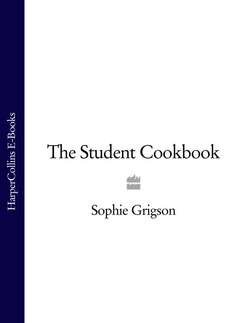Читать книгу The Student Cookbook - Sophie Grigson, Sophie Grigson - Страница 75
Scrambling
ОглавлениеThe very best, creamiest scrambled eggs are those cooked slowly and lovingly in a bowl set over a pan of simmering hot water – try it one day when you have plenty of time (it can take 20 minutes or more of fairly constant attention). Meanwhile, stick with this quicker, not-quite-so-ideal method, which is better suited to the normal pace of life. Remember that scrambled eggs should never, ever be cooked in advance and kept warm. That way you end up with ghastly over-cooked, rubbery, institutionalised scrambled eggs instead of the luxuriously creamy, tender confection that properly scrambled eggs should be.
Break two eggs per person (or three if ravenous) into a bowl and whisk together. Season well with salt and pepper but do not add milk or water. Place a small saucepan or frying pan over a low heat and add a good knob of butter. Let it melt, then pour in the egg. Stir constantly with a wooden spoon or spatula, scraping the base and sides of the pan as the egg sets on them. Keep going until the saucepan contains a creamy, thick primrose-yellow scramble of eggs. Whip off the heat swiftly, scrape the scrambled egg straight on to plates or toast and dish up.
Smart scrambled eggs Sunday brunch or breakfast with someone special is the time to dress up your scrambled eggs in full finery. Something as simple as stirring chopped fresh herbs into them as soon as they are cooked brings a touch of glamour – try chopped chives, tarragon or coriander. More fancy is the addition of strips of smoked salmon and some chopped chives, or sautéed sliced mushrooms, cooked alongside in a frying pan. I also love diced deseeded tomato or sun-blush tomato and roughly torn-up basil, again stirred in just as the scrambled egg reaches the perfect creamy consistency.
